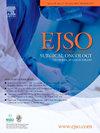非小细胞肺癌新辅助治疗后机器人辅助胸外科手术的优势:倾向评分匹配分析
IF 3.5
2区 医学
Q2 ONCOLOGY
引用次数: 0
摘要
背景:机器人辅助胸外科手术(RATS)在复杂手术中具有优势。新辅助治疗导致非小细胞肺癌(NSCLC)术中困难。本研究的目的是比较大鼠和视频辅助胸外科手术(VATS)在新辅助设置。方法回顾性研究纳入接受新辅助治疗后手术治疗的ii期- iiib (N2)期NSCLC患者。采用rat或VATS进行分组。主要预后指标为R0切除率、手术时间和估计失血量。次要结果是转开胸手术的比率。收集人口学资料、临床资料和病理资料进行分析。采用倾向得分匹配(PSM)来平衡偏倚。结果在2021年7月至2024年6月期间,118例患者接受了RATS, 317例患者接受了VATS。在PSM之前,RATS与较短的手术时间相关(194 min vs. 223 min, p <;0.001)和较低的开胸转换率(8.47% vs. 18.6%, p = 0.015)。然而,在R0切除率(p = 0.306)或平均估计失血量(p = 0.371)方面没有观察到显著差异。PSM后,RATS在手术时间(194 min vs 223 min, p = 0.001)、减少因纤维化或暴露困难引起的转化(p = 0.005)和N2淋巴结数量(p = 0.02)方面仍有优势。单因素和多因素回归均显示RATS与较短的手术时间和较低的转换率相关。结论我们的研究表明,在新辅助情况下,RATS与VATS相比,在缩短手术时间、降低转换率和淋巴结清扫方面具有优势。本文章由计算机程序翻译,如有差异,请以英文原文为准。
Advantages of robotic-assisted thoracic surgery after neoadjuvant therapy in NSCLC: A propensity score–matched analysis
Background
Robot-assisted thoracic surgery (RATS) was advantageous in complex procedures. Neoadjuvant therapy leads to intra-operative difficulty in non-small cell lung cancer (NSCLC). The aim of this study was to compare RATS and video-assisted thoracic surgery (VATS) in neoadjuvant setting.
Methods
This retrospective study included stage II-IIIB(N2) NSCLC patients who underwent surgery after receiving neoadjuvant therapy. Patients were grouped by RATS or VATS. The primary outcomes are R0 resection rate, operation time and estimated blood loss. The secondary outcome is the rate of conversion to thoracotomy. Demographic data, clinical data and pathological data were collected for analysis. Propensity score matching (PSM) was applied to balance bias.
Results
Between July 2021 and June 2024, 118 patients received RATS and 317 patients received VATS were included. Before PSM, RATS was associated with a significantly shorter operative time (194 min vs. 223 min, p < 0.001) and a lower conversion rate to thoracotomy (8.47 % vs. 18.6 %, p = 0.015). However, no significant differences were observed in the R0 resection rate (p = 0.306) or mean estimated blood loss (p = 0.371). After PSM, RATS still demonstrated advantages in operation time (194 min vs 223 min, p = 0.001), reducing conversion caused by fibrosis or difficult exposure (p = 0.005), and number of N2 lymph nodes (p = 0.02). Single and multiple regressions both suggested RATS was associated with shorter operation time and lower conversion rate.
Conclusions
Our study suggested that RATS is a superior approach compared with VATS in neoadjuvant context, with advantages in shortening operation time, reducing conversion rate, and lymph node dissection.
求助全文
通过发布文献求助,成功后即可免费获取论文全文。
去求助
来源期刊

Ejso
医学-外科
CiteScore
6.40
自引率
2.60%
发文量
1148
审稿时长
41 days
期刊介绍:
JSO - European Journal of Surgical Oncology ("the Journal of Cancer Surgery") is the Official Journal of the European Society of Surgical Oncology and BASO ~ the Association for Cancer Surgery.
The EJSO aims to advance surgical oncology research and practice through the publication of original research articles, review articles, editorials, debates and correspondence.
 求助内容:
求助内容: 应助结果提醒方式:
应助结果提醒方式:


